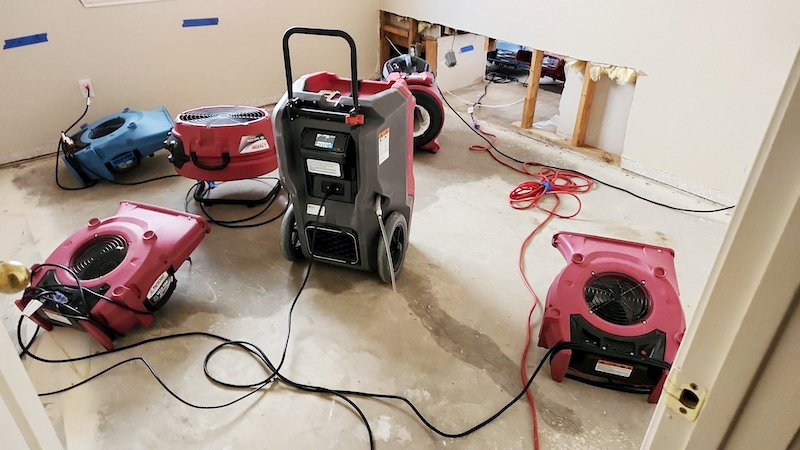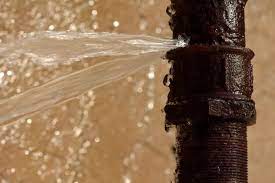Water damage is one of the most underestimated threats to any home. It doesn’t always start with a flood or a broken pipe. In fact, most cases begin with something as small as a leaky faucet, a loose pipe connection, or a dripping water heater. What appears minor at first can silently wreak havoc—damaging your walls, floors, furniture, and even your health over time.
Why Minor Leaks Shouldn’t Be Ignored
It’s easy to overlook a few drops. You might put off repairs thinking it’s not serious yet. But here’s the truth: small water leaks don’t stay small. Given time, they escalate—and by the time the signs are visible, you’re already dealing with expensive repairs.
The Hidden Power of Water
A Slow Leak With Major Consequences
Water doesn’t need much space to spread. Even a pinhole leak in a pipe can release gallons of water every day. That water seeps into drywall, insulation, wood, and tile—turning strong, stable materials into soggy, weakened messes.
Water Doesn’t Stop—It Spreads
Think of water like a silent invader. It finds the path of least resistance. It moves under floors, behind cabinets, and through electrical systems. By the time you see the damage on the surface, it’s already deep beneath.
Common Places Where Leaks Begin
Inside Walls and Ceilings
Leaking pipes or roofs can silently saturate drywall and wooden studs. These leaks are rarely obvious until the wall begins to stain, swell, or crumble.
Underneath Floors and Tiles
Water trapped under laminate, hardwood, or tile causes buckling, warping, and eventual mold growth. Unfortunately, this often goes unnoticed until the floor starts feeling soft or uneven.
Behind Appliances and Fixtures
Your dishwasher, washing machine, fridge, and toilets are all common leak zones. Small hose connections or internal malfunctions can cause slow leaks that remain hidden for weeks.
Attics, Basements, and Crawlspaces
Out-of-sight, out-of-mind areas are some of the most common spots for water to settle undetected. A leaky roof or HVAC condensation line can flood your attic or crawlspace without any warning.
Signs That Water Damage Is Already Happening
Unusual Odors and Damp Air
A musty or earthy smell often indicates mold growth behind walls or beneath flooring. Even if you don’t see it, your nose might detect it.
Wall Stains and Discoloration
Yellow, brown, or greyish water stains on walls or ceilings are classic signs of long-term moisture exposure.
Buckled Floors and Peeling Paint
Moisture trapped behind surfaces causes paint to bubble or peel and floors to warp or separate.
Higher Water Bills Without Explanation
If your usage hasn’t changed but your bill keeps rising, you may have a slow leak somewhere in your plumbing.
The Expensive Consequences of Delayed Repairs
Cost of Mold Remediation
Once mold sets in, cleanup becomes expensive and labor-intensive. It involves removing affected materials, sanitizing spaces, and sometimes tearing out entire sections of your home.
Replacing Damaged Materials
Drywall, flooring, baseboards, cabinetry, and furniture may need to be replaced entirely—often at a high cost.
Structural Weakening
Water can deteriorate foundational elements like floor joists, beams, and studs—leading to dangerous structural instability.
Long-Term Health Concerns
Exposure to mold spores and bacteria from water-damaged areas can trigger asthma, allergies, and chronic respiratory problems.
How Procrastination Makes It Worse
Time Turns Tiny Leaks Into Massive Repairs
A drip you could’ve fixed with a wrench becomes a wall you need to rebuild. Delay turns $10 fixes into $10,000 restorations.
Why Insurance Doesn’t Always Cover the Cost
Most insurance policies cover sudden or accidental leaks—not damage from long-standing issues. Waiting too long could leave you fully responsible for the repairs.
Smart Prevention Tips from Restoration Experts
Perform Regular Home Checks
Monthly inspections around sinks, water heaters, and appliances can help you catch leaks early—before they escalate.
Invest in Smart Leak Detectors
Devices that detect moisture and shut off water automatically can prevent major losses while you’re away from home.
Address Small Leaks Immediately
Don’t wait until it’s visible or ‘serious.’ If you see drips, puddles, or moisture—fix it immediately or call a pro.
Partner With Trusted Pros Like PuroClean
In Scottsdale, PuroClean Restoration Specialists respond quickly and professionally to stop leaks and restore your property before the damage becomes unmanageable.
Why Hiring a Professional Matters
Advanced Leak Detection
Restoration pros use thermal imaging, moisture meters, and inspection tools to find damage hidden behind walls and floors.
Industrial-Grade Drying and Remediation
They bring powerful equipment—like air movers, dehumidifiers, and HEPA filters—to dry and sanitize your home completely.
Documentation for Insurance Claims
Professionals provide detailed reports, moisture readings, and photo documentation to help you file insurance claims confidently.
Total Restoration and Peace of Mind
With experts handling the cleanup, you avoid missed moisture pockets, recurring mold issues, and long-term structural risks.
Scottsdale Homes and Water Damage
Leaks in Dry Climates Are Often Overlooked
Scottsdale’s dry weather can fool homeowners into thinking water damage is rare. But when leaks do happen, they often go unnoticed—and dry air doesn’t prevent water from destroying walls and floors.
Unique Leak Challenges in Arizona Homes
From sun-worn roofing to cracked irrigation systems, Arizona homes face unique risk factors that make regular leak inspections even more critical.
Conclusio
Water Damage Starts Small, Ends Costly
Ignoring a drip might seem harmless—but water doesn’t need your permission to spread, soak, and destroy. What starts as a leak can end in mold, rot, and major repairs.
Stop It Early, Save Your Home
Your best defense? Stay alert. Fix the small stuff fast. And when in doubt, call professionals like PuroClean Restoration Specialists to protect your home from the silent threat of water damage.
FAQs
1. How can I detect water damage early?
Look for musty smells, rising water bills, wall stains, or warped floors. Smart sensors can also alert you to hidden moisture.
2. Is all water damage visible right away?
No. In fact, most serious damage starts behind the scenes—inside walls, under floors, or in hidden spaces.
3. How long does it take for mold to grow?
Mold can begin growing within 24 to 48 hours in moist environments.
4. Should I file a claim for a small leak?
If the damage is significant or widespread, filing a claim may be helpful. But check your policy—neglected leaks might not be covered.
5. Can water damage return after restoration?
If not properly dried and treated, yes. That’s why it’s crucial to work with professionals who use commercial-grade equipment and follow best practices.




 PuroClean Restoration Specialists
PuroClean Restoration Specialists